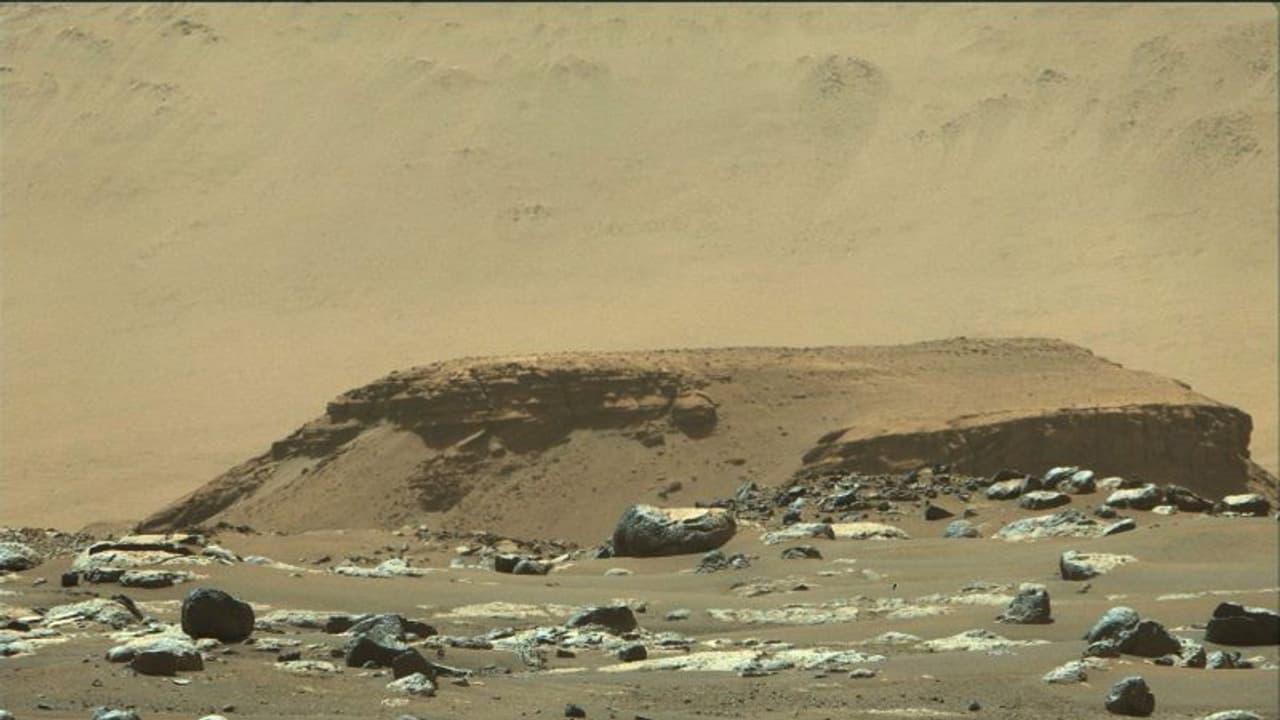A new study on Thursday revealed that photos snapped by Perseverance early in its mission, shows how water helped shape the Red Planet's landscape billions of years ago, and provide clues that will guide the search for evidence of ancient life.
In the short time since NASA’s Perseverance rover landed in Mars’ Jezero Crater on February 18, 2021, it created history and it was picked primarily because previous observations by Mars orbiters suggested that it hosted a big lake and a river delta in the ancient past.

A new study on Thursday revealed that photos snapped by Perseverance early in its mission, shows how water helped shape the Red Planet's landscape billions of years ago, and provide clues that will guide the search for evidence of ancient life.
In February, NASA's Perseverance rover landed in Jezero crater, where scientists suspected a long-gone river once fed a lake, depositing sediment in a fan-shaped delta visible from space.
"Without driving anywhere, the rover was able to solve one of the big unknowns, which was that this crater was once a lake," study co-author Benjamin Weiss, a professor of planetary sciences at the Massachusetts Institute of Technology, said in a statement. "Until we actually landed there and confirmed it was a lake, it was always a question."
Layers within the cliffs reveal how its formation took place.
NASA astrobiologist Amy Williams and her team in Florida found similarities between features of the cliffs seen from the crater floor and patterns in Earth's river deltas.
The shape of the bottom three layers showed a presence and steady flow of water early on, indicating Mars was "warm and humid enough to support a hydrologic cycle" about 3.7 billion years ago, the study says.
The top and most recent layers feature boulders measuring more than a metre in diameter scattered about, probably carried there by violent flooding.
Also read: Study reveals warming ocean waters causes drop in brightness of the Earth
But it is the fine-grained sediment of the base layer that will likely be the target of sampling for signs of long-extinct life -- if it existed -- on Mars.
The findings will help researchers figure out where to send the rover for soil and rocks that may contain precious "biosignatures" of putative Martian life forms.
"From orbital images, we knew it had to be water that formed the delta," Williams said in a press release.
"But having these images is like reading a book instead of just looking at the cover."
Perseverance has tested out all of its engineering capabilities, driven 1.6 miles (2.6 kilometers) over rough terrain and taken tens of thousands of photos with its 19 cameras. Of all of these incredible successes, there are three major milestones that we’re particularly excited about: collecting the first rock core samples, flying the Ingenuity helicopter and publishing our first scientific results about the Jezero Crater delta.
(With inputs from agency)
